Who We Are
This new website is dedicated to safer printmaking. It was created with the generous support of a University of Saskatchewan President’s SSHRC grant. It will be one of the few Canadian-based websites to feature safer art-making practices for all print media. John Graham (Assistant Professor, Printmaking & Digital Media, U of S) has lead safer printmaking research teams of experienced undergraduate printmakers for over 2 years in developing this website. We researched and complied material in best practices in Intaglio, Relief, Lithography, Screen-printing, Monotypes, Letterpress, and Digital Media. Collectively we researched safer printmaking methods and materials in our printmaking studio and online.
Printmaking is evolving as a vital, dynamic, and pluralistic form of Canadian contemporary art making, but it needs to advance more uniformly as an environmentally responsible studio art. This research is motivated by a growing awareness that working in shared artistic working environments has obvious cumulative health risks and print media artists need to be made aware of health conscious and safer printmaking methods. Nationwide, optimizing healthier printmaking needs to occur more effectively in all studio environments. This includes universities, colleges, artist-run printmaking collectives and private studios.
The intended audience of this website will be practicing professional print artists, printmaking students and educators, and safer printmaking researchers. Much progress has been made in many printmaking studios to promote health and safety, environmental sustainability and responsibility, but many print artists continue to value artistic results over health concerns. They are sceptical, unaware, confused, and disagree about the effectiveness of newer safer printmaking methods. They default to toxic traditional methods because they know that they work. This website is intended to inspire these artists and those who are already open to make their printmaking practice safer.
We gratefully acknowledge the support of a Grant from the Social Sciences & Humanities Research Council of Canada & the University of Saskatchewan. (PSSHRC)
Project Facilitator
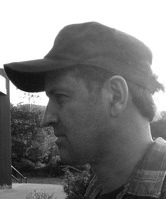
-
John Graham
Website Design
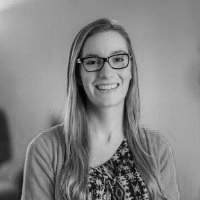
-
Stephanie Dilsner

-
Rowan Yates
Studio Researcher
-
Mary Sarcauga
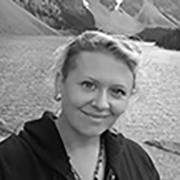
-
Brianne Skiftun
Research Partners
Tara Cooper
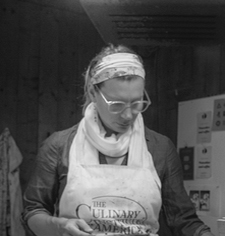
Safer Printmaking Researcher
Contact: tlcooper@uwaterloo.ca
Research location: Department of Fine Arts, University of Waterloo, Ontario, Canada
Research funding source: University of Waterloo’s LITE Seed Grant Program
Scope of Research: Tara Cooper generously shares with us her extensive safer printmaking research work in the form of multiple videos. Tara supervised students to create “How To” or step-by-step printmaking demonstration videos in multiple print media. We have integrated these valuable videos into this website that were sourced from Tara Cooper’s printmaking project The Printmaker’s Compendium. This digital archive serves as an online resource, as an archive, and as a forum for exchange for best practices in printmaking. These videos promote greener, safer, more economical studio habits and practices. These practices not only embody good stewardship, but also encourage new printmakers to grow their printmaking skills (post university) in home-based studios, outreach initiatives, local community centres or as art teachers in educational environments.
Henrik Bøegh
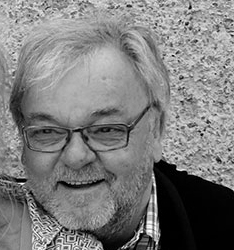
Safer Printmaking Researcher
Contact: mail@artbag.dk
Research location: Grafisk Eksperimentarium, Copenhagen, Denmark
Scope of Research: Henrik Bøegh is a Danish printmaker who specializes in non-toxic intaglio. He has taken an active part of the development of techniques and equipment for Non-Toxic Intaglio since 1995. Bøegh is the author of the Handbook of Non- Toxic Intaglio, published in six languages (English, Spanish, Flemish, Dutch, French, and Danish), and it has all the guidance a printmaker needs when it comes to safer, non-toxic intaglio methods. He offers international workshops in his printmaking studio in Capileira, Spain. Henrik is constantly developing safer and cheaper solutions, testing materials and equipment in order to find better and safer ways of printmaking.
Holly Morrison

Safer Printmaking Researcher
Contact: hjmorrison@vcu.edu
Research location: Department of Painting and Printmaking, Virginia Commonwealth University School of the Arts, Richmond, VA, USA
Scope of Research: Intaglio - A Studio Manual was created with support from the VCU Center for Teaching Excellence - Small Grant Program. This electronic intaglio studio manual was authored by Holly Morrison for the students at the VCU School of the Arts. Holly extends much gratitude to the VCU Painting & Printmaking department students, for their willing participation in the documentation presented on the studio manual.
Erin Smith

Safer Printmaking Researcher
Contact: erinsmith01@gmail.com
Research location: Department of Studio Art, Faculty of Fine Arts, Concordia University, Montreal, Quebec, Canada
Research funding source: Sustainability Action Fund Special Project Funding
Scope of Research: Erin researched and tested many forms of safer printmaking in Intaglio, Relief, Letterpress and Lithography. Erin investigated the possibility of replacing petroleum-based products used in print studios with vegetable-based cleaners. Erin investigated two new types of printing ink that included water-based inks for the Intaglio studio and on letterpresses and a non-toxic oil-based printing ink for Lithography. Erin also researched and tested vegetable-based non-toxic cleaning solvents on Vandercook letterpresses, Lithography offset presses, Lithography direct presses.
Our Research
This research is organized and presented on this website to substantiate and promote safer printmaking as a best practice, identify best product information, and champion environmentally responsible art-making. The goals for this website feature safer printmaking methods to complement and validate safer artmaking. Regional, national and international safer printmaking research links and partnerships and collaborations have been established. My vision of this research is to support exciting artistic research and be a community leader in environmentally responsible art-making. This research is a long-term commitment to explore safer and transformative changes in all print media methods.
Printmaking as an important visual art discipline. Print media artists, practitioners, educators and art students are anxious to learn safer printmaking. The urgency of transforming printmaking practices to be more environmentally sustainable is critical. It is far wiser to teach safer printmaking techniques that students can use after graduation than to spend large capital expenditures on equipment such as fume exhaust systems that enable students to work with toxic chemicals used traditional printmaking in an educational establishment.
Audience
This research is motivated by a growing awareness that working in shared artistic working environments has obvious cumulative health risks and print media artists need to be made aware of health conscious and safer printmaking methods. The intended audience of this website will be practicing professional print artists, printmaking students and educators, and safer printmaking researchers.
Like many visual artists worldwide, my environmental concerns have become increasingly enmeshed with health and safety awareness. I, and many like-minded print media practitioners, have questioned our training. We are responding creatively and effectively to the important choices we face as a society in reconciling cultural and educational needs with the environmental imperative. Safer printmaking choices offer artists a far greater range of creative possibility whilst increasing their artistic productivity. This increase in productivity has a very positive cultural and economic ripple effect for both artists and society.
Nationwide, optimizing healthier printmaking needs to occur more effectively in all studio environments. This includes universities, colleges, artist-run printmaking collectives and private studios. Printmaking is evolving as a vital, dynamic, and pluralistic form of Canadian contemporary art-making, but it needs to advance more uniformly as an environmentally responsible studio art. Much progress has been made in many printmaking studios to promote health and safety, environmental sustainability and responsibility, but many print artists continue to value artistic results over health concerns. They are skeptical, unaware, misinformed, and disagree about the effectiveness of newer safer printmaking methods. They default to toxic traditional methods because they know that they work.
Motivations
Printmaking is evolving as a vital, dynamic, and pluralistic form of Canadian contemporary art-making, but it needs to advance more uniformly as an environmentally responsible studio art. Nationwide, optimizing healthier printmaking needs to occur more effectively in all studio environments. This includes universities, colleges, artist-run printmaking collectives and private studios. Throughout this research project, safer printmaking methods and materials will be evaluated technically and artistically in the print media of intaglio, relief, lithography, screen-printing, and the digital media. To address this significant knowledge gap, this dynamic website, unique in Canada, to feature and mobilize this evolving research. As a key part of the process, we will artistically apply research results in multiple safer printmaking projects. This will include traditional applications as well as cutting edge interdisciplinary art projects.
Contemporary printmaking needs more exemplary artists to cross the disciplinary boundaries, and collectively search for new meanings and innovative forms of expression as culture makers of our time. Printmaking possesses unique qualities of graphic aesthetics and has a very special place in the visual arts. Art-making in a shared printmaking studio amplifies the communal aspect of a printmaker in society. We are well positioned at the University of Saskatchewan take a leadership role and an example of institutional willingness to reverse the direction of the ecological devastation. The risks of climate change are well documented. Furthermore, many print artists and educators are deeply concerned with the worldwide cultural impact of the pending extinction of the art of printmaking because of its historically bad health and safety record.
What is safer for human health is better for the environment and promoting a greater awareness of safer printmaking needs to occur more globally. Much progress has been made in many printmaking studios to promote health and safety, environmental sustainability and responsibility, but many print artists continue to value artistic results over health concerns. They are skeptical, unaware, confused, and disagree about the effectiveness of newer safer printmaking methods. They default to toxic traditional methods because they know that they work. This pilot research project will begin to identify safer printmaking methods, promote them through the development of a website and establish regional collaborations.
Research will be conducted on historical printmaking materials, which because they contain carcinogens, and emit airborne toxins, etc. should be discontinued. Note that this research project will not be using the term "non-toxic printmaking". "It can be argued that nothing can be totally non-toxic but the term 'non-toxic printmaking' has become widely accepted for safer printmaking practices and techniques with a less harmful environmental impact."(2) Nonetheless, products have been certified as "non -toxic" by the Arts & Creative Materials Institute, Hingham, MA, USA.(3)
Our Website
Safer printmaking can also be both a pioneer of more ecological technologies and artistic new meanings. The design strategy for the website will be to convince and inspire print artist practitioners of the appropriateness, ease and urgent need for safer printmaking practices. Given the need to both inform and inspire, this website includes demonstration videos, safer printmaking products and supplier’s info. As much as printmaking has been loved for its traditional resonance, its adaptability applied in multi-media has no limitations. Printmaking is interconnected with other artistic media, and multi-disciplinary art projects are ripe with possibilities. Contemporary printmaking absorbs the qualities of painting, drawing, photography, and sculpture. Printmaking may also extend itself outward to other artistic media because of its versatility, limitless scale, democratic nature, and its quality as a multiple.
The clear communication of proven safer printmaking methods, materials and products is a priority of the website design. "The art world is full of anecdotes about artists who have had serious health problems related to the materials."(4) New best practices in printmaking that reduce health risks continue to diversify. We have identified, planned and co-ordinated safer printmaking studio research with student researchers at the U of S. We organized organize the comparative technical results and creative applications for the student designer for this safer printmaking website. Safer printmaking links and opportunities (workshops, residencies, etc.) and cross-disciplinary knowledge will be featured to promote more awareness, knowledge and open dialogue on safer printmaking.
Co-ordinated on-line information is needed for Canadian prints artists, educators and students who want to practice safer printmaking. This is not the case for many international safer printmaking websites in English. Some websites feature many safer, non-toxic printmaking products but with many products that are unavailable in Canada. A wide range of written and visual information will be presented on-line on this Canadian website that is concise, integrated, easily understood and includes practical information regarding all print media. This information will be featured alongside technical breakthroughs; exemplary studio examples of uses of safer, more ecologically sound safer printmaking products and materials that are available in Canada. Cost effective products will also be emphasized.
Citations
(1) "Not Dying For Their Art" by Alicia P. Gregory, Odyssey, Magazine for the University of Kentucky, Fall 2000
(2) Printmaking Handbook: Non-Toxic Printmaking, Mark Graver, A&C Black Publishers, London, UK, 2011
(3) ACMI is based in in Hingham, MA, USA. This is an international association based of over 200 art material manufacturers which seeks to promote safety through its certification program. ACMI certified product seals (AP Non-Toxic and CL Cautionary Labeling) indicate that these products have been evaluated by a qualified toxicologist and are labeled in accordance with federal and state laws. Each product in the program undergoes extensive toxicological testing that covers both acute and chronic toxicity concerns before it is granted the right to bear the ACMI certification seal. The ACMI product certification program includes on-going review of the latest scientific and regulatory information available to keep the program current.
(4) "Exposing Ourselves to Art" Scott Fields, Environmental Health Perspectives, Volume 105, #3, March 1997


